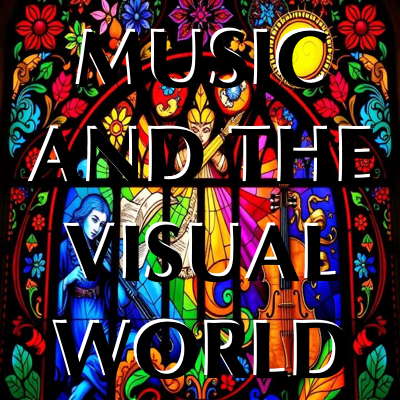 DISCUSSION: John Dante Prevedini leads a discussion about Music and the Visual World, including contributions from Celia Craig, Halida Dinova and Yekaterina Lebedeva.
DISCUSSION: John Dante Prevedini leads a discussion about Music and the Visual World, including contributions from Celia Craig, Halida Dinova and Yekaterina Lebedeva.
From Chaos to Ecstasy
Haydn's 'The Creation' in Rome,
reviewed by GIUSEPPE PENNISI
Rome's Accademia Nazionale di Santa Cecilia opened the year 2020 with a new production of Franz Joseph Haydn’s Die Schöpfung (The Creation). As usual, three performances were programmed. I attended the 11 January performance. It was a good way to begin a new year; in addition, the oratorio, although popular, had not been performed in Rome for about four years.
Die Schöpfung is well-known. It is generally included in the Salzburg Summer Festival's Ouverture Spirituelle. Thus, there is no need to provide Classical Music Daily readers with the background on its composition, its Austrian and London premieres, or its contents. The three parts are nearly operatic acts. In this production, the first and the second act form the first part of the concert, while, after an intermission, the third act is the second part. The operatic aspect is heightened by surtitles so that the audience can fully grasp Gottfried van Swieten's good libretto, which is rigorously based on the Bible.
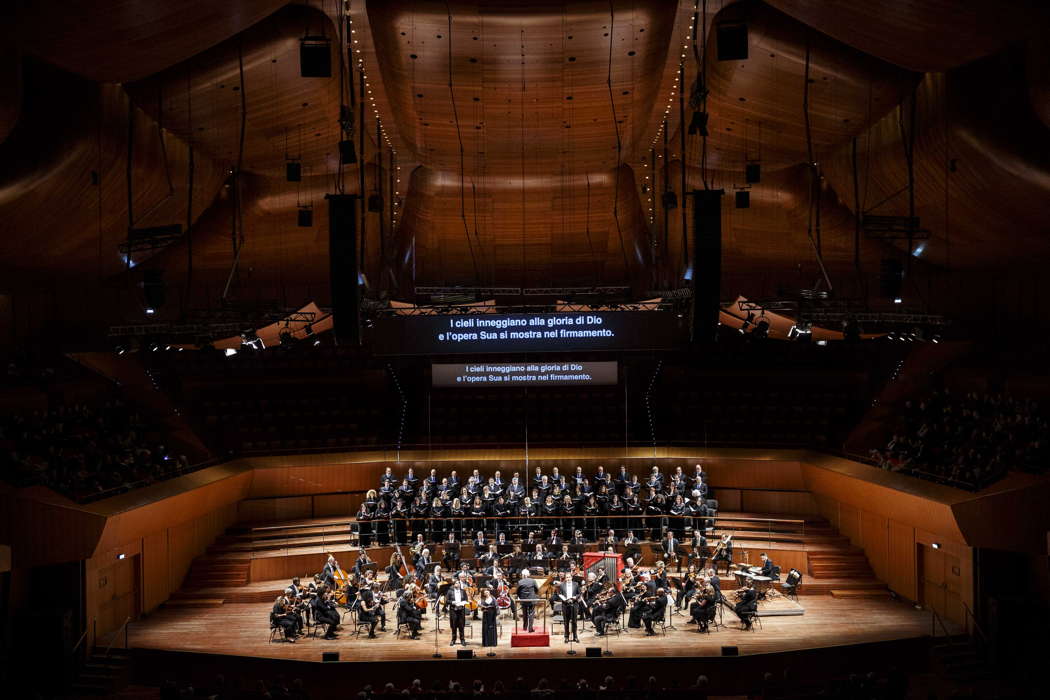
Accademia Nazionale di Santa Cecilia's Haydn 'Creation' in Rome.
Photo © 2020 Riccardo Musacchio
In the first and second acts, the three archangels Gabriel, Uriel and Raphael observe the Creation by following the biblical text very closely. In the third act, we are no longer witnessing from a distance the works of the Creator. The scene is the Garden of Eden. After Uriel's introduction, the act is a long love scene between Adam and Eve which includes a duet supported by a choral background. In short, from chaos, before the Creation, to ecstasy, before the snake and its temptations appear.
As Haydn planned, there are five characters but only three singers: the bass and the soprano are Raphael and Gabriel in the first and second act and then become Adam and Eve in the third act. The roles are taxing both for the duration - nearly two hours of music - and for the virtuoso singing — they imply coloratura, agility, quite a few high Cs and many Fs. In the first part, it is noteworthy how conductor, orchestra and singers amplified the transition from chaos - C minor - to the newly-lit world - A major. In the second act, the emphasis is on the descriptive imagery as in the portrayal of the animals: the cheerful, but rude, trombone blast of the lion, the pouncing tiger, the peaceful grazing of cattle, and sinuous music for the snake. The third act is not as contemplative as normally assumed: the love between Adam and Eve is powerful, not merely platonic; their duet is rapturous and timeless, an essential transition to the glorious final chorus.
In this production, the conductor is the Austrian Manfred Honeck, who has had a long career with the Wiener Philharmoniker and is often a guest conductor of the Accademia Nazionale di Santa Cecilia. He knows the score inside out, and he mastered it fully from the initial introduction, where the alternation between fortissimo and pianissimo depicts chaos, to the final ecstatic love duet.
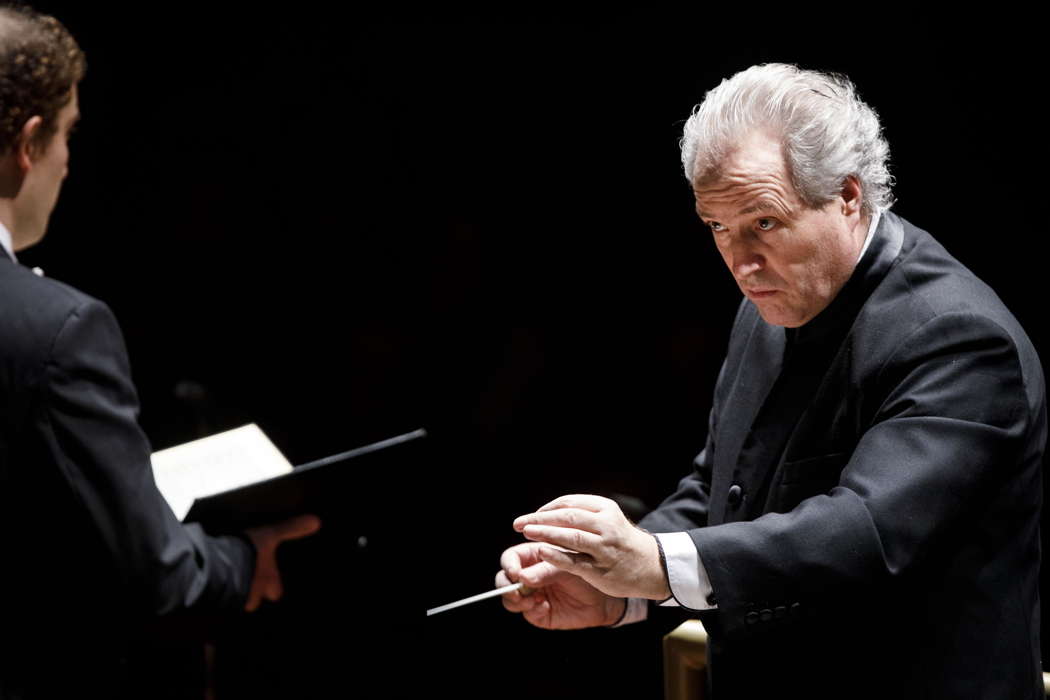
Manfred Honeck conducting Haydn's 'Creation' in Rome. Photo © 2020 Riccardo Musacchio
German tenor Maximilian Schmitt is Uriel: he showed an excellent legato and a very good agility in ascending to a high register.
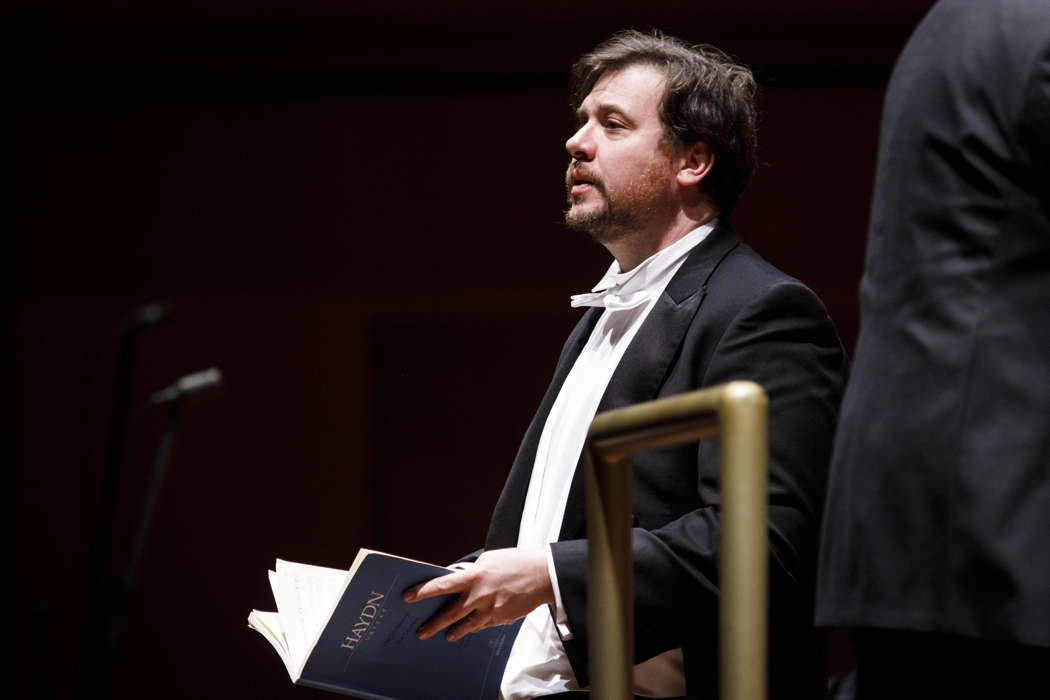
Maximilian Schmitt, tenor, singing Uriel in Haydn's 'Creation' in Rome.
Photo © 2020 Riccardo Musacchio
German bass Tareq Nazmi is a contemplative Raphael and a passionate Adam. They both have a strong volume, a requirement in the huge three-thousand-seat concert hall.
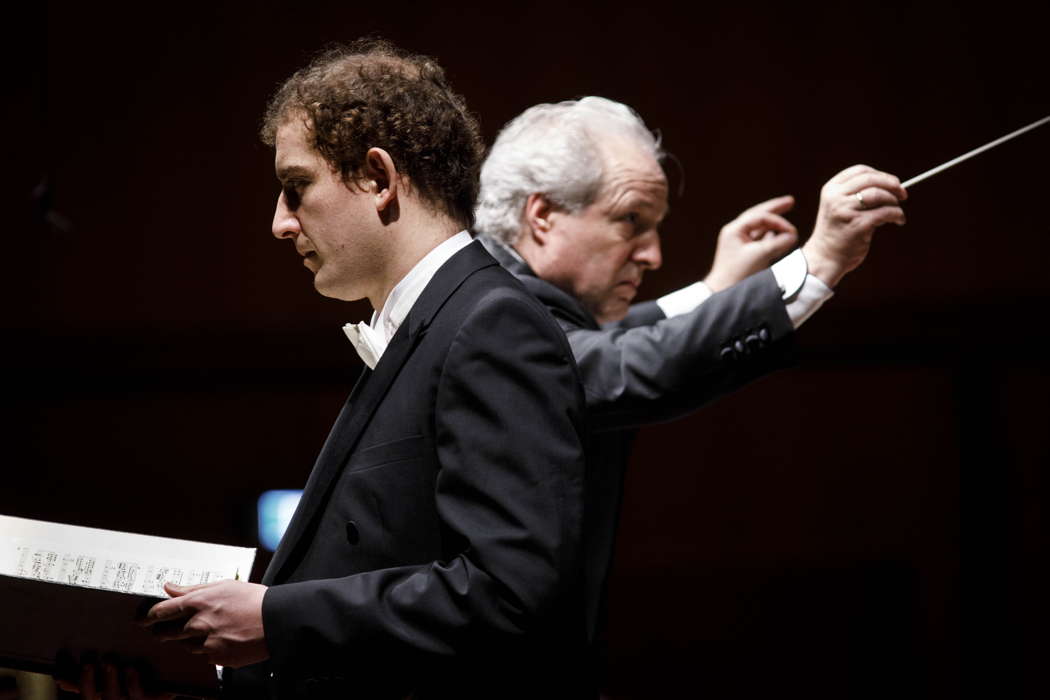
Tareq Nazmi, bass, with, behind him, Manfred Honeck conducting Haydn's 'Creation' in Rome. Photo © 2020 Riccardo Musacchio
American soprano Robin Johannsen is Gabriel and Eve. She is a lyric soprano with a well-set voice and a good coloratura, but in the first part her volume seemed quite little as compared to those of the tenor and of the bass. She recouped in the long second part, also because the bass lowered his volume in the long and taxing duet.
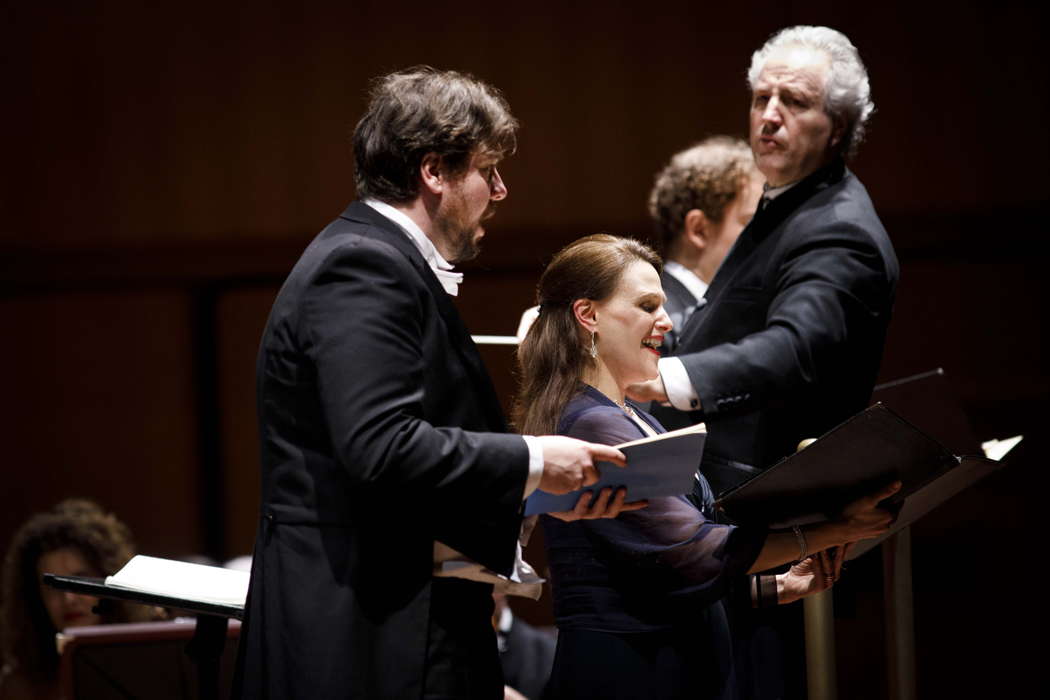
Robin Johannsen, soprano, centre, with, to her left, tenor Maximilian Schmitt. On her right is conductor Manfred Honeck, with, behind him and partially obscured, Tareq Nazmi, bass, in Haydn's 'Creation' in Rome. Photo © 2020 Riccardo Musacchio
The chorus, led by Piero Monti, was vibrant, as usual.
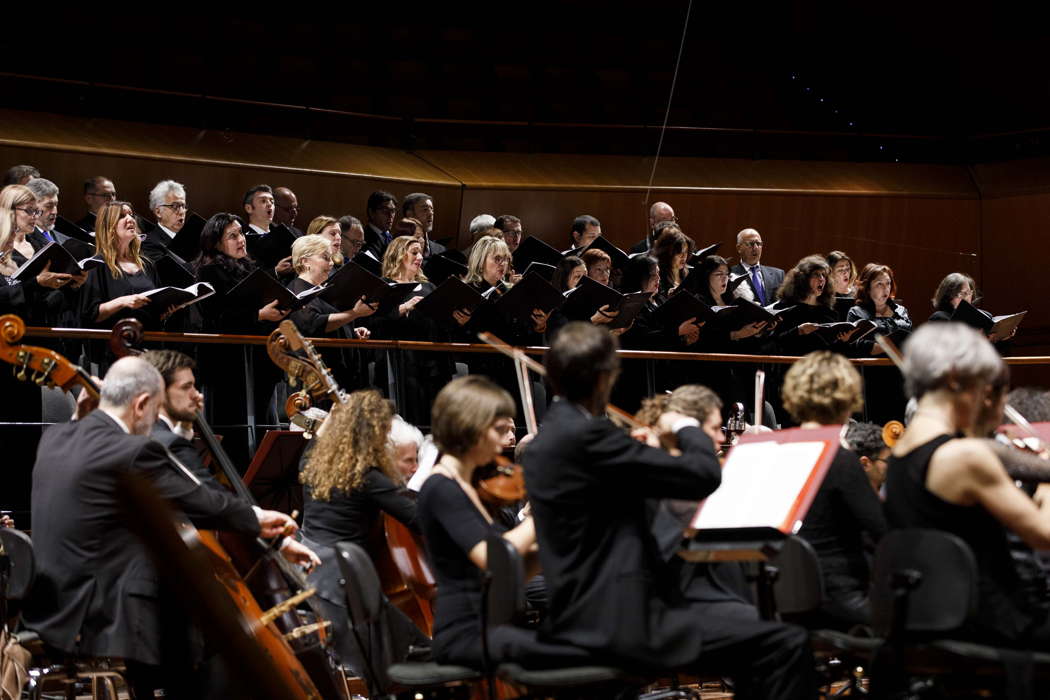
Accademia Nazionale di Santa Cecilia's Haydn 'Creation' in Rome - members of the chorus and orchestra. Photo © 2020 Riccardo Musacchio
A great success.
Copyright © 12 January 2020
Giuseppe Pennisi,
Rome, Italy

FURTHER INFORMATION: FRANZ JOSEPH HAYDN



